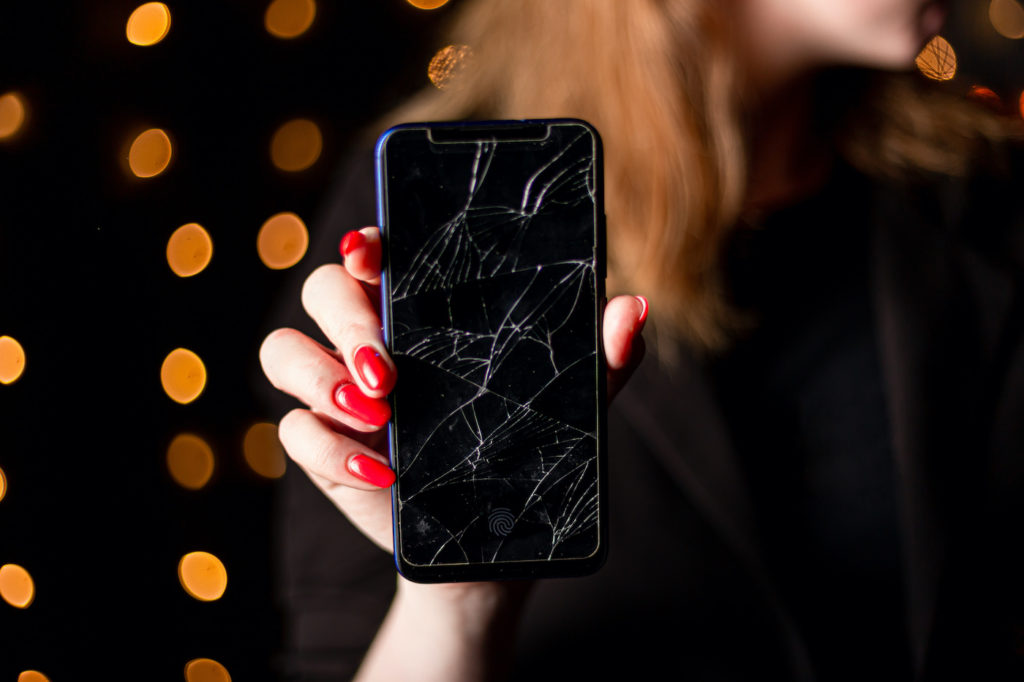In the New York Times yesterday, a writer named Stephanie Eisler Vance discussed her harrowing mental breakdown in 2008. She wrote: “I was speaking in tongues. I was lying on my side on a plastic-covered couch, my neck craned over its arm, my mother beside me consulting with a doctor, and I was speaking in tongues. Some spirit was moving through me. … This spirit was not the Lord or any other celestial being. … It was, to my surprise and dismay, months and months of quotes and quips I had read since the inception of the Facebook News Feed, now bubbling up from my subconscious in an inscrutable cacophony of youthspeak.”
While the manic nature of Vance’s mental break is unique, declining mental health connected with social media and smartphone usage is certainly not. A year ago, the Wall Street Journal reported a bizarre increase among teen girls in involuntary verbal tics associated with watching TikTok videos about Tourette’s syndrome. But more common mental health problems are tied to smartphone addiction, and America’s youth are getting the brunt of it. In April this year, The Atlantic’s Derek Thompson pointed to CDC data that found the proportion of high schoolers who reported feeling persistently sad or hopeless rose from 26 percent in 2009 to 44 percent in 2021. A key factor behind this uptick, Thompson argues, is social media use. American Compass’s Chris Griswold makes similar arguments in National Affairs, connecting young teens’ rise in depression and suicidal ideation to their social media use. And the very young ages of users is especially startling: “About 40 percent of American children under 13 use Instagram daily; even more use Facebook. A third of children ages seven through nine use social media” (emphasis added). He sums up the situation this way: “For hours every day, millions of American children enter the virtual care of a Silicon Valley interested in monetizing them.”
We now have mountains of evidence that social media combined with digital technology have colonized our mental lives, especially the most young among us. In sheer economic terms, this means that vast amounts of human potential are wasted by aimless scrolling. But the spiritual consequences of our society-wide digital immersion are even more distressing. Social media platforms, to which our smartphones serve as omnipresent portals, are facilitating a cultural epidemic of acedia.
The scale of this problem calls for using a wide array of tools in our civilizational arsenal to combat this trend. Many have offered self-help guides for digital detox, such as Cal Newport’s 2016 bestseller Deep Work. And Griswold and others endorse updating and passing laws that restrict social media, especially for users under age eighteen. They are right to do so. But between the individual and government is a great bulk of institutions that could also help address the cultural challenges posed by tech. Specifically, we need to create stigmas around social media and smartphone use—culturally agreed upon limits on device usage, and designated times and places where screen time is socially unacceptable.
Start your day with Public Discourse
Sign up and get our daily essays sent straight to your inbox.In sheer economic terms, this means that vast amounts of human potential are wasted by aimless scrolling. But the spiritual consequences of our society-wide digital immersion are even more distressing.
Diagnosing the Problem
It is important not to underestimate the social and spiritual consequences of social media consuming so much of our lives. According to one survey, as of 2022 Americans spend an average of two hours and three minutes on social media every day. This means that if these rates stay constant, in the course of an average American’s lifespan, nearly 60,400 hours are devoted to social media. These many hours spent scrolling will surely have deleterious effects on our economic productivity. As Newport has convincingly argued in Deep Work, not only could the sheer number of hours spent checking apps be time spent elsewhere—in sustained, creative thought or work. The act of turning our attention away from a task also means we must expend mental effort just to return to the original task. And the anxieties and depression nurtured by social media don’t turn off when we leave the app—they continue to weigh us down when we step away from the screen.
This situation, still in its early years, is a recipe for civilizational dysfunction. One wonders how many unwritten books, unfounded companies, uninvented creations are the collateral damage of digital addictions. Our adversaries are keenly aware of this too: it has now been widely documented that TikTok, whose parent company has connections to China’s government, uses an algorithm for U.S. users that’s highly addictive.
But even more concerning than our lack of productivity caused by social media is the spiritual malaise that often sets in when we spend hours of our day doomscrolling. Social media addiction is the twin of workaholism: both belie a restlessness and dissatisfaction with human existence as it is. In Leisure: The Basis of Culture, the philosopher Josef Pieper explains that acedia (according to the understanding that prevailed during the Middle Ages) denotes not laziness, but a sort of idleness that stems from a person’s refusal to be what she is—a reasoning human being made to marvel at wondrous and beautiful things. Whether we’re constantly working or ceaselessly scrolling, we’re adopting a restive posture that resists joyful admiration of our Creator and his creation. Scrolling preoccupies us with less worthy things, facilitating escape from the human need to celebrate good things and worship our Divine Author.
Given the high spiritual stakes of digital technology, Stephanie Eisler Vance’s possession-like description in the New York Times, then, is perhaps no coincidence. In Public Discourse earlier this year, Joshua Hochschild described these addictive algorithms as “functionally demonic” because they do what demons do. Like algorithms, “[d]emons attack our weaknesses, the vices that make us vulnerable.” He advises: “If the algorithm is functionally demonic, … we should not want to centralize, regulate, or even tame its influence. We must find some way to protect ourselves from it, and to strengthen the powers of our soul against it.” No less than our souls are at play in our habits of digital consumption.
Healthy Shame
Hochschild is right to advise us to safeguard our souls against the influence of addictive algorithms. But we need not limit our constraints on this technology to the individual’s willpower. Society has always provided moral direction and safeguards by stigmatizing things. “Stigma” comes from the Greek work stizein, which literally means to “mark” or “tattoo.” This definition is a helpful image for what we do as a culture when we stigmatize things: we mark them out as unacceptable, brand them with a sense of shame.
Some might shy away from using “shame” as an instructor, but it is an inevitable part of culture and necessary for a functioning society. Some things are bad enough that they deserve public condemnation but do not necessarily require the full weight of criminalization. Passionately making out in most public places will usually earn many uncomfortable glances. And despite how common it is, most of us heartily disprove of rudeness, especially to service workers.
Cigarette smoking is perhaps the best parallel we have to something that we’ve moved away from through a combination of stigma and public policy. In the mid-twentieth century, tobacco was a multi-billion dollar industry that enjoyed a powerful lobby in Congress. As health researchers discovered its links to lung cancer, activists began to form awareness campaigns about the deadliness of smoking. They placed visual aids in public places to convey the harms of smoking. In the 1960s, the Federal Trade Commission required warning labels on cigarette packages, and the Federal Communications Commission banned advertising on radio and TV.
In conjunction with these legal reforms, the anti-smoking effort also created stigmas around smoking, making cigarettes in schools, restaurants, stores, and even home socially unacceptable. They created designated smoking areas to signify that smoking elsewhere was not appropriate. The anti-smoking effort was so successful that, by the 1990s, the tobacco industry took the lead on the “It’s the Law” initiative, which was programming made for retailers to help prevent minors from purchasing cigarettes.
Some things are bad enough that they deserve public condemnation but do not necessarily require the full weight of criminalization.
This story offers many lessons for how to approach stigmatizing our use of digital technology. Obviously there are several limits to this analysis. Crucial dissimilarities exist between the role that digital technology, on the one hand, and smoking, on the other, occupy in our lives. Smartphones are so highly integrated in the functions of day-to-day life—driving, communicating, shopping, working—that forming detachment and creating shame around certain uses of it will not be easy. And the tobacco industry was not nearly as wealthy as big tech is. Still, like tech, tobacco is highly addictive, and our society has managed to cut down significantly on its consumption of tobacco: since the ’60s, the number of smokers has been reduced by more than half.
So how can we go about stigmatizing smartphones? We must begin by deciding appropriate and inappropriate uses of them. Just as we have created designated smoking areas, we can create designated “areas” for smartphone use (though probably without the precise physical boundaries). During meals, for example, smartphones should be put away. It should be seen as déclassé to scroll while eating out and during social functions. And more urgently, just as with smoking, schools should be no place for smartphone use. Education is too important an endeavor for students’ minds to be divided between coursework and Instagram.
Part of creating effective stigmas will be organizing public information campaigns that communicate the now well-established links between social media and mental health disorders, especially among teens. And public policy will also help give stigma against smartphones its weight: in his National Affairs essay mentioned earlier, Griswold suggests enforcing the age verification laws for social media, and even raising the age limits.
And if there’s enough public pressure to limit the use of smartphones, perhaps big tech companies will begin to create their own measures to mitigate their addictive nature—a sort of self-limiting effort similar to the tobacco industry’s “It’s the Law” campaign. Apple has already created “do not disturb” settings that can be customized for work, sleep, and personal time (though it’s not clear how effective these settings have been). Another idea I’ve read—though I can’t remember where—is that social media apps could remove their “infinite scroll” feature, a page design that loads new content non-stop as you keep scrolling. Facebook used to have a fixed newsfeed, meaning the content stopped once you caught up on all the new posts. But social media apps eventually discovered they could increase user retention by adopting infinite scroll. Perhaps with enough public outcry, social media platforms could remove these most addictive features.
To those who say everyone should just delete their apps and get flip phones, that solution works for some. But as noted earlier, much of contemporary life is facilitated through smartphones and social media, especially for teens and young adults. So mitigation solutions, rather than absolute detox, will be the most effective. As Griswold put it: “Social media is here to stay, and fighting a rearguard, Luddite rebellion of withdrawal is unlikely to succeed in individual families. It is certainly doomed to fail as a society-wide strategy: Teenage social life in America now happens largely on social media, and expecting that families can or will opt out on their own in game-changing numbers is not realistic. …”
It will be up to institutions to enforce stigmas around smartphone use. Schools should have zero-tolerance policies on smartphone use during school hours. One might reply that anxious parents would not tolerate being unable to communicate with their children during school hours. But hopefully public information campaigns that convey the dangers of excessive screen time will make even the most anxious parents see that this is good for their child’s well-being. At home, families should also have “no-phone zones” and perhaps even designated no-phone hours.
In our hyper-polarized moment, rarely does an issue enjoy widespread agreement from the left and the right. But seeing addictive digital technology corrode our mental, psychological, and even spiritual well-being—especially in our kids—has struck a nerve. The challenge is formidable. But an honest estimation of the problem, combined with sober thinking about the task at hand, can yield some much-needed breakthroughs.














